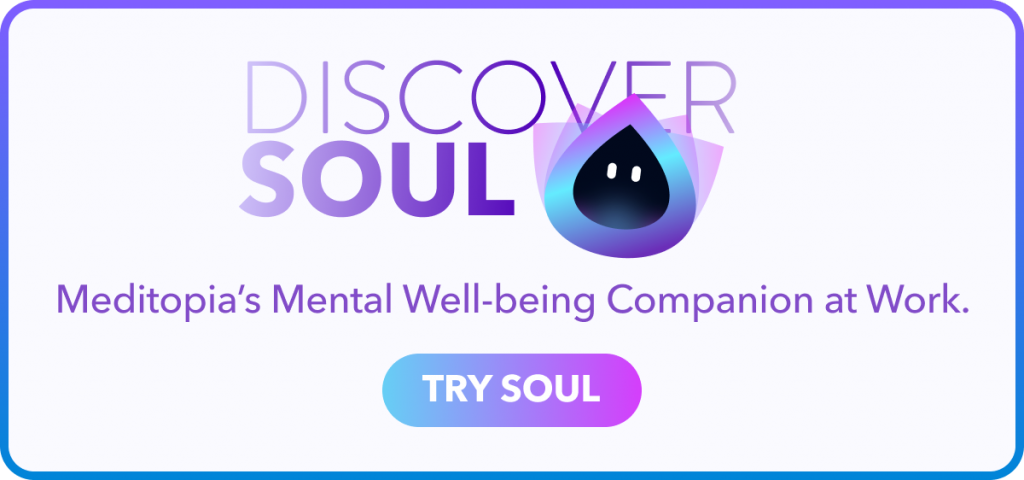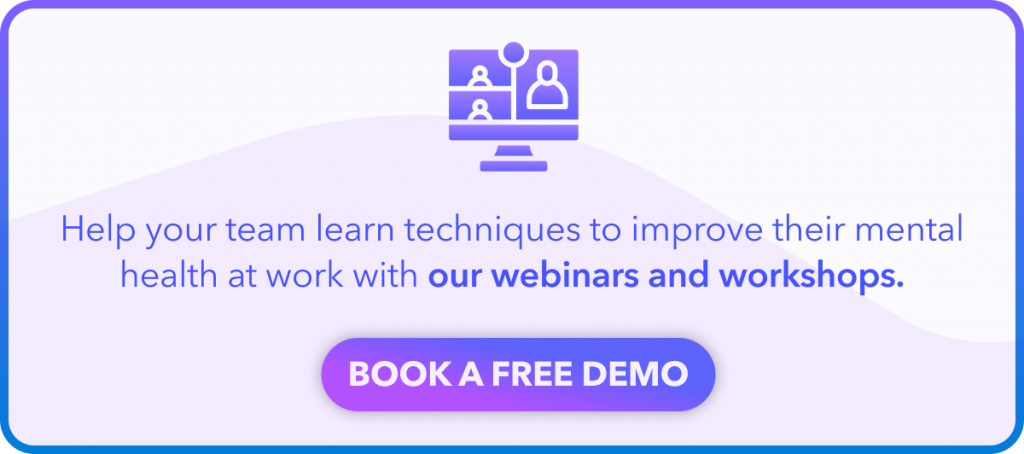How to Support Employees with Mental Health Issues

Table of contents
- Importance of promoting supportive company culture
- How to spot an employee struggling with mental health?
- Ways to support employees with mental health issues
- How to manage employees using mental health as an excuse?
- 5 Tips on Talking to employee with poor mental health
- Key Takeaways
- Supporting employee with poor mental health: FAQs
We live in a world that’s fast-paced, and usually celebrates speed over innovation, results over creativity, and productivity over stability. As HR professionals, it’s not exactly clear how to support employees with mental health issues, and this could affect not only the company’s stats, but the well-being of the team.
In this article, we’ll delve into practical strategies, insights, and resources to equip you with the knowledge and tools needed to effectively support employees navigating mental health challenges.
Importance of promoting supportive company culture
Are you currently dealing with an employee with mental health issues? If you are not, chances are they haven’t made it visible, or you don’t have the resources to determine it.
According to the Mental Health Foundation, 15% of employees experience mental health issues in the workplace. The well-being of your team is highly correlated to the success of your organization, but can you do to support it? Let’s dive deeper into the matter.
- A supportive culture creates an environment where employees feel safe and comfortable discussing mental health issues in the workplace without fear of stigma or discrimination. This openness allows issues to be addressed early on, preventing them from escalating into more serious problems.
- Additionally, a supportive culture encourages employees to seek help when needed and promotes access to resources and support services to reduce burnout. This proactive approach to mental health ensures that employees receive the assistance and accommodations they require to manage their mental well-being effectively.
- Moreover, when you have a mental health policy you promote empathy, understanding, and mutual respect among employees, fostering a sense of belonging and community. This sense of connection can buffer against the negative effects of stress and mental health challenges, enhancing overall well-being and productivity in the workplace.
How to spot an employee struggling with mental health?
It can be challenging to recognize the signs of poor mental health in the workplace. As we said, it’s usually a topic that’s either minimized or becomes a taboo. Put yourself in their shoes, would you ask your manager some time off because you just got divorced? How would you ask for support because your father passed away a few weeks ago and you just can’t bear it?
Besides creating a safe environment and promoting open communication, you need to understand the signs that tell you an employee is struggling with mental health. Here are some things to pay attention to.
1. Behavioral Changes:
Behavioral changes refer to alterations in an individual’s actions, reactions, or mannerisms that may indicate shifts in their mental or emotional state. These changes can manifest in various ways and may include:
- Withdrawal from social interactions or team activities
- Increased irritability, mood swings, or agitation
- Changes in eating or sleeping patterns
- Avoidance of previously enjoyed activities or hobbies
2. Performance Issues:
Performance changes refer to alterations in an individual’s work-related abilities, productivity, or output that may indicate shifts in their mental or emotional well-being.
Please understand that it’s not normal to see performance changes in someone whose tasks and responsibilities are the same, and if you do not see an improvement after reasonable adjustments, you should pay attention to their mental health. These performance changes can manifest in various ways and may include:
- Decreased productivity or quality of work
- Difficulty concentrating or making decisions
- Missed deadlines or incomplete tasks
- Increased reliance on others for assistance or guidance
- Lack of proactivity
3. Absenteeism:
Absenteeism refers to the habitual or frequent absence of an employee from work without a valid reason or justification. It occurs when an employee is consistently absent from their scheduled work shifts or fails to report to work as expected.
Employees who self-report as having poor mental health have approximately 5% higher absence rates. This is how absenteeism can manifest:
- Frequent or unexplained absences from work
- Repeated tardiness or arriving late to meetings
- Extended medical leaves or requests for time off without clear reasons
- Patterns of taking sick days on specific days of the week or month
Ways to support employees with mental health issues
Supporting staff with mental health issues can be challenging if we do not know what to do. But it becomes even more complicated if we, as HR professionals, are not willing to do the most simple thing: listening.
It’s true, you can’t fix anyone’s life. You don’t have the power to bring a loved one from death, or to minimize the burden of existential crises. But you can listen, get engaged with your team, and develop empathy to understand their struggles. Here are actionable strategies and methods for supporting employees who are dealing with mental health issues:
1. Offering Anonymous Support:
- Establish confidential channels or resources where employees can seek support anonymously, such as an Employee Assistance Program (EAP) hotline or online counseling services.
- Provide options for anonymous feedback or suggestions to encourage employees to express their concerns or seek assistance without fear of judgment or repercussions.
- Offer AI mental well-being companions, they are available 24/7 to chat, and since they are trained by mental health experts, the guidance, understanding, and anonymity offered can make a significant change

2. Creating a Mental Health Policy:
- Develop a comprehensive mental health policy outlining the organization’s commitment to supporting employee well-being and addressing mental health concerns.
- Include clear guidelines and procedures for accessing mental health resources, accommodations, and support services, ensuring transparency and consistency in how mental health issues are addressed.
- Gather feedback before and after implementing your policy, it will help you understand the real needs of your employees and identify the improvements necessary on your policy.
3. Promoting Psychological Safety:
- Foster a culture of psychological safety where employees feel comfortable speaking openly about their mental health concerns without fear of stigma or discrimination.
- Encourage open communication, empathy, and mutual respect among team members, emphasizing the importance of supporting each other’s mental well-being. It will help the team to build resilience and develop a positive work environment.
- You can try being open about your own mental health to increase engagement and lead with empathy as well.
4. Providing Training and Education:
- Offer training sessions or workshops to increase awareness and understanding of mental health issues among employees and managers.
- Provide resources and guidance on how to recognize signs of mental health struggles, offer support, and connect employees with appropriate resources and assistance.
- Meditopia for Work can help you with both, our workshops and webinars are customized to your team’s unique needs, and include a wide library of mental health resources everyone can access to.

5. Implementing Flexible Work Arrangements:
- Consider offering flexible work arrangements, such as telecommuting, flexible hours, or compressed workweeks, to accommodate employees’ mental health needs and promote work-life balance.
- Provide options for temporary or permanent adjustments to work schedules or responsibilities for employees experiencing mental health challenges.
6. Encouraging Self-Care and Wellness Practices:
- Promote self-care and wellness practices through initiatives such as mindfulness sessions, stress management workshops, mental health games, or physical fitness programs.
- Encourage employees to prioritize their mental and physical well-being by taking breaks, engaging in hobbies or activities they enjoy, and seeking support when needed.
7. EAPs
- Employee assistance programs are ideal tools to deal with mental health issues in the workplace.
- They provide confidential counseling services provided by licensed professionals.
- Crisis intervention and support for urgent or traumatic situations.
- Support for work-related issues such as conflicts and job stress.
- 24/7 access to counseling services for convenience and accessibility.

How to manage employees using mental health as an excuse?
If you’re interested in managing employees with mental health issues, you have probably heard -at work or from colleagues in other companies- a common issue: employees using mental health as an excuse.
Despite the global stats regarding mental health work being true, it’s also a reality that some people use it as an excuse to miss work or gain preferences, instead of wanting real support. Here’s guidance for HR and managers on how to handle this situation with empathy and understanding:
Educate and Raise Awareness:
- Educate managers and employees about mental health conditions, including common symptoms, challenges, and the importance of seeking support.
- Raise awareness about the prevalence of mental health issues and the impact they can have on individuals’ ability to work effectively.
Address Performance and Behavior:
- Address performance or behavior issues objectively and directly, regardless of the underlying cause.
- Focus on the impact of the employee’s actions on their work performance and the team, rather than making assumptions about their motivations or intentions.
Encourage Positivity and Change:
- Recognize their burdens, but always with the focus on getting better and asking for help, rather than merely sympathizing.
- Explain that the company has many resources available and that they can use it anytime.
- Avoid threats and extreme disciplinary measures.
Monitor and Follow Up:
- Regularly check in with employees to see how they are coping and offer ongoing support and guidance as needed.
- Monitor the employee’s performance and behavior over time, and address any concerns or issues that arise with sensitivity and understanding.
5 Tips on Talking to employee with poor mental health
Talk to them privately:
- If you notice signs of poor mental health, request a private meeting with them in a safe and private space.
- Explain what you have noticed, and ask if there’s something going on with them.
- If you encounter reactivity or a negative attitude towards speaking, simply mention that you’re worried about them and want to help anyway possible.
- If they choose to speak, listening is the best starting point. According to their answer, you can provide resources available at your company, counseling included.
Don’t make assumptions:
- Approach the conversation with an open mind and avoid making assumptions about the employee’s situation or the reasons behind their struggles. This is why listening is so important.
- If they express they are dealing with depression or more challenging mental health conditions, do not try to offer support as a psychologist would.
- Try not to diminish their struggles, maybe a breakup is not a big deal to you, but to them it is.
Take a positive approach:
- Express concern and empathy, and focus on offering support and assistance rather than criticizing or blaming the employee for their difficulties.
- Do not focus on their productivity or performance stats, rather focus on redirecting them to the resources available and express that you’re there for them.
- If possible, and if you relate to their issue, say that you have also dealt with that problem and that it can be manageable with the right support.
Being clear about confidentiality:
- Express that the reason for the meeting is to support them, and the things discussed will not be part of any evaluation process or discussed with any other manager.
- Explain any limitations to confidentiality, such as legal obligations or the need to involve HR or management for support.
Key Takeaways
- Recognize the importance of approaching conversations about mental health with sensitivity, empathy, and understanding,
- Create a supportive and inclusive environment for employees to seek help and support.
- Learn practical tips and techniques for effectively communicating with employees who may be struggling with mental health issues, such as talking in private, avoiding assumptions, and taking a positive approach.
- Understand the importance of providing access to support resources and services, such as Employee Assistance Programs (EAPs), counseling services, and mental health workshops, to assist employees in managing their mental well-being.
- Foster a culture of psychological safety where employees feel comfortable discussing mental health concerns openly and seeking help without fear of stigma or discrimination.
- Recognize the importance of ongoing support and follow-up with employees who are dealing with mental health issues, providing assistance, encouragement, and resources as needed to help them navigate their challenges effectively.
Supporting employee with poor mental health: FAQs
What are the resources to offer employees with poor mental health?
You can offer resources such as Employee Assistance Programs (EAPs), counseling services, mental health workshops, and support groups. Meditopia for Work has them all in one, reach out!
What role do EAPs play in supporting mental health in the workplace?
Employee Assistant Programs provide confidential counseling, crisis intervention, referrals to specialists, and educational resources, supporting employees’ mental well-being.
Are there legal protections for employees with mental health conditions?
Yes, in the UK, the Equality Act 2010 prohibits discrimination against individuals with mental health conditions in the workplace. This includes protection against direct and indirect discrimination, harassment, and victimization. Employers are required to make reasonable adjustments to accommodate employees with mental health conditions, such as flexible working arrangements or adjustments to workload.
Similarly, in Europe, various directives and regulations ensure the protection of employees with mental health conditions. For example, the European Union’s Employment Equality Directive prohibits discrimination in employment on various grounds, including disability, which covers mental health conditions. Additionally, the European Convention on Human Rights provides protections for individuals’ right to privacy and dignity, which can be relevant in cases involving mental health discrimination.
Can you fire an employee for mental health issues?
Firing an employee solely for mental health issues may violate anti-discrimination laws. Instead, focus on performance issues and provide support and accommodations where possible.
What not to say to an employee with mental illness?
Avoid stigmatizing language or making assumptions about the employee’s condition. Instead, show empathy, offer support, and focus on their strengths and abilities.



